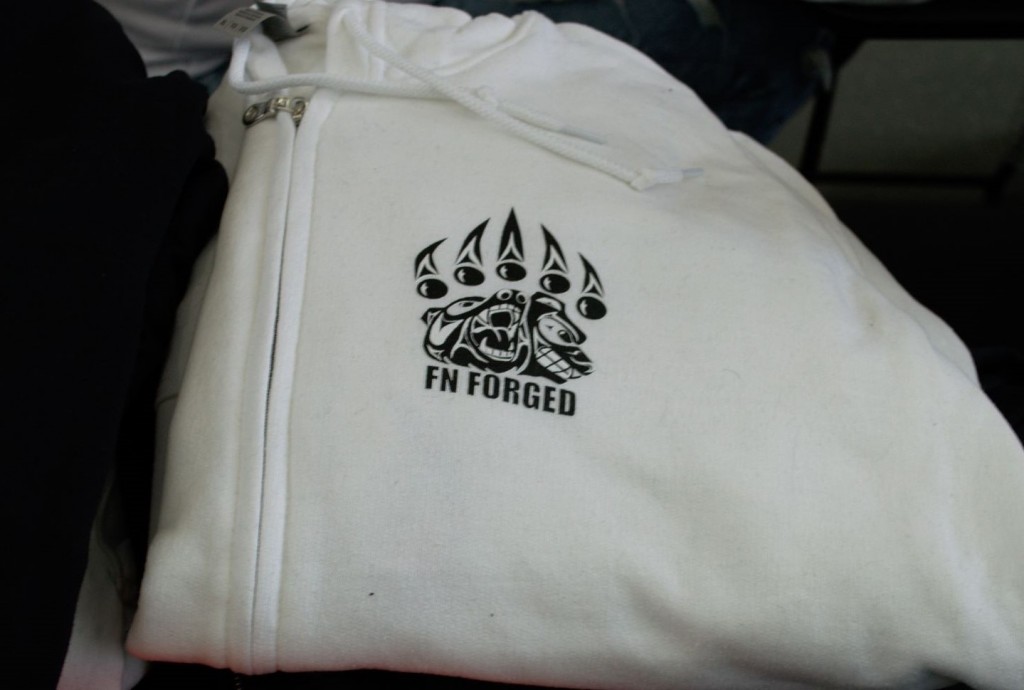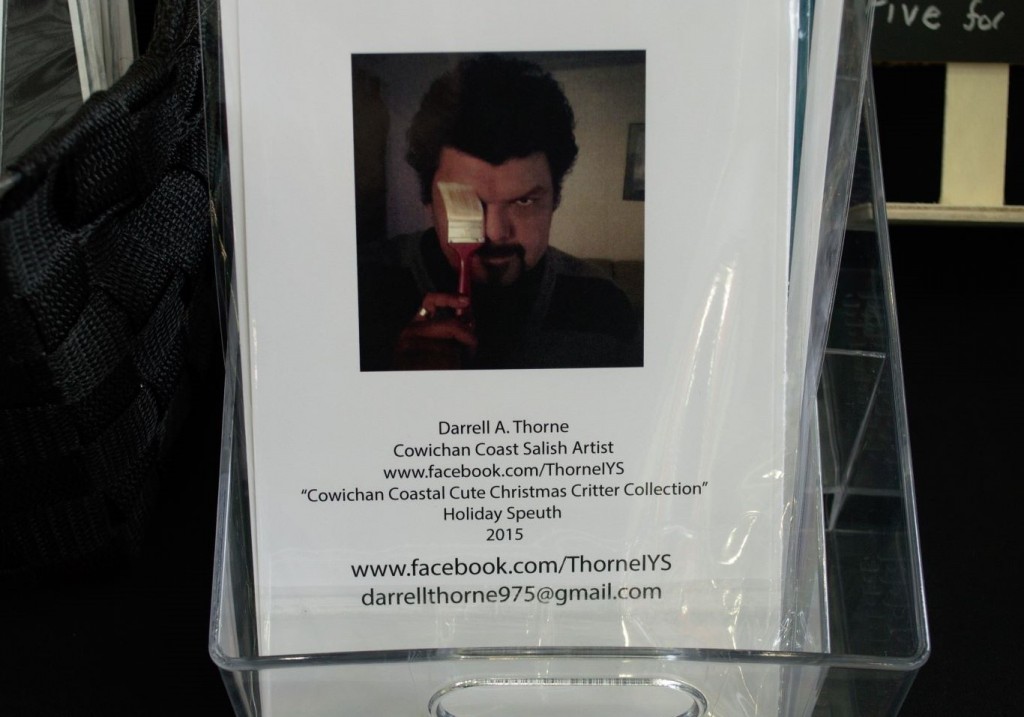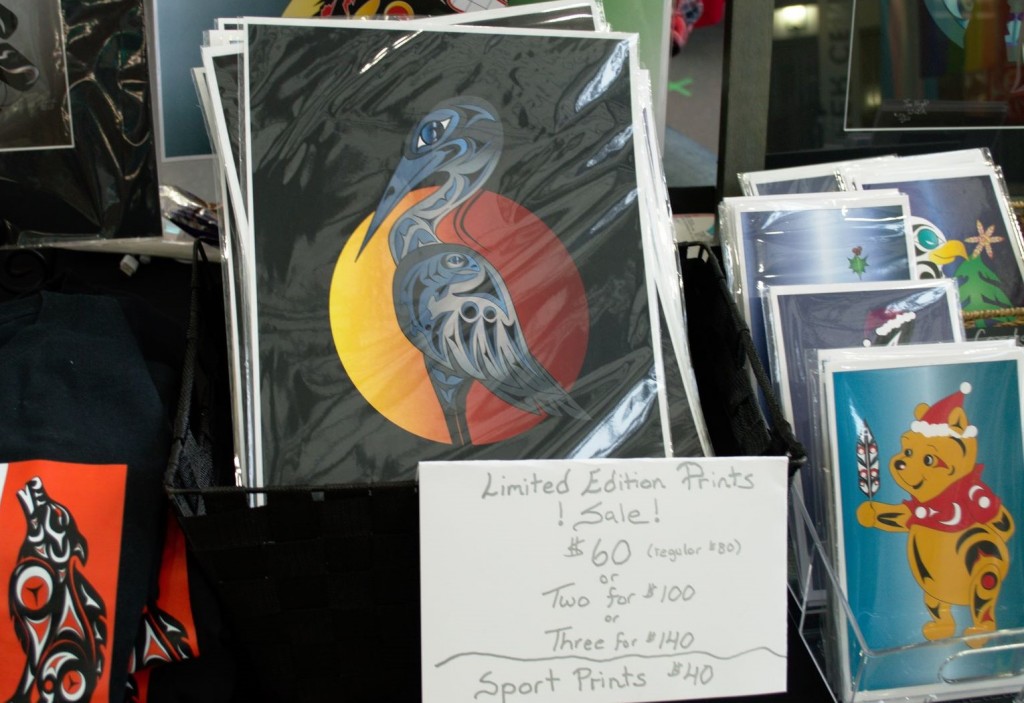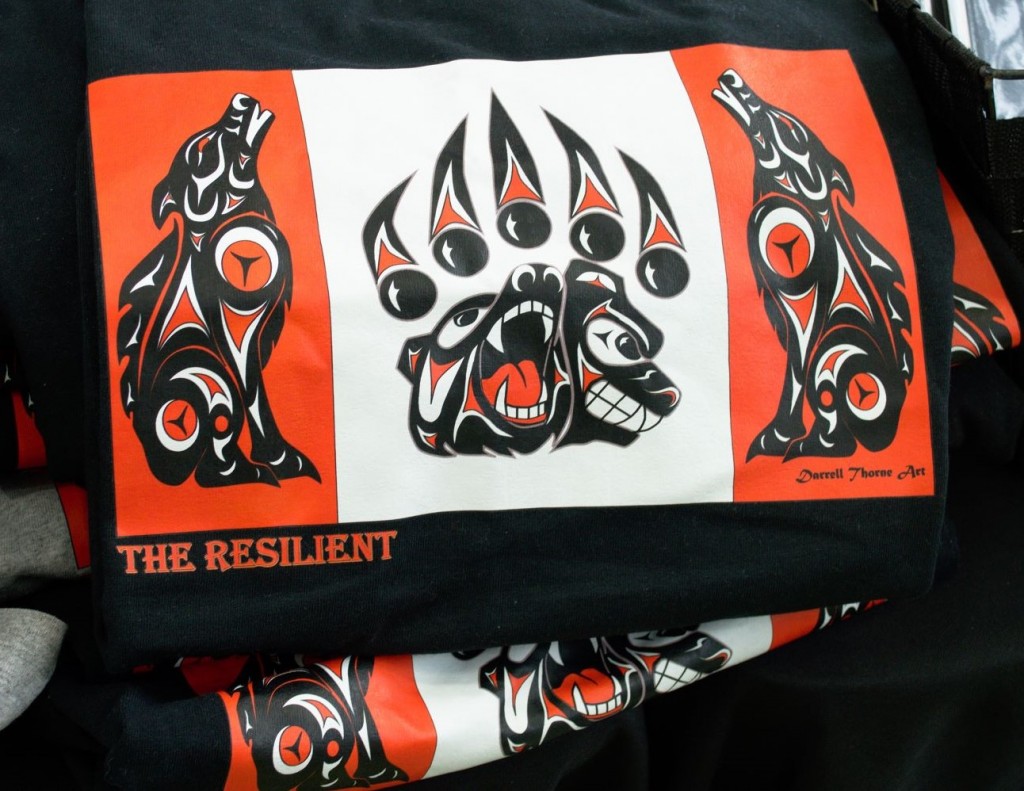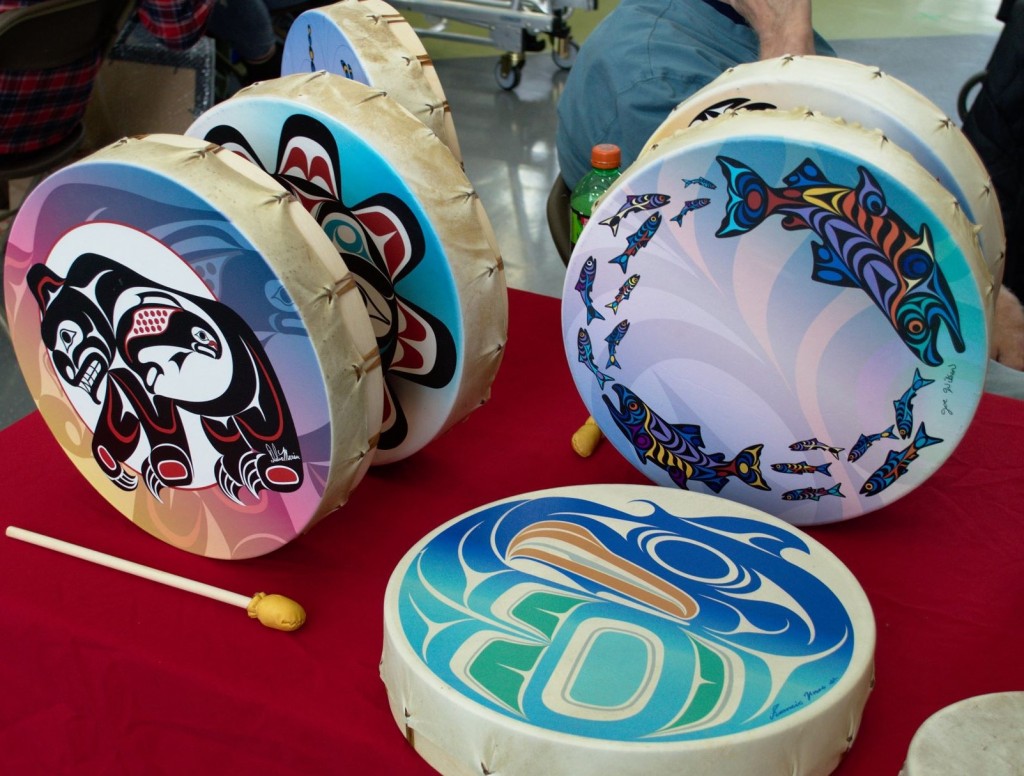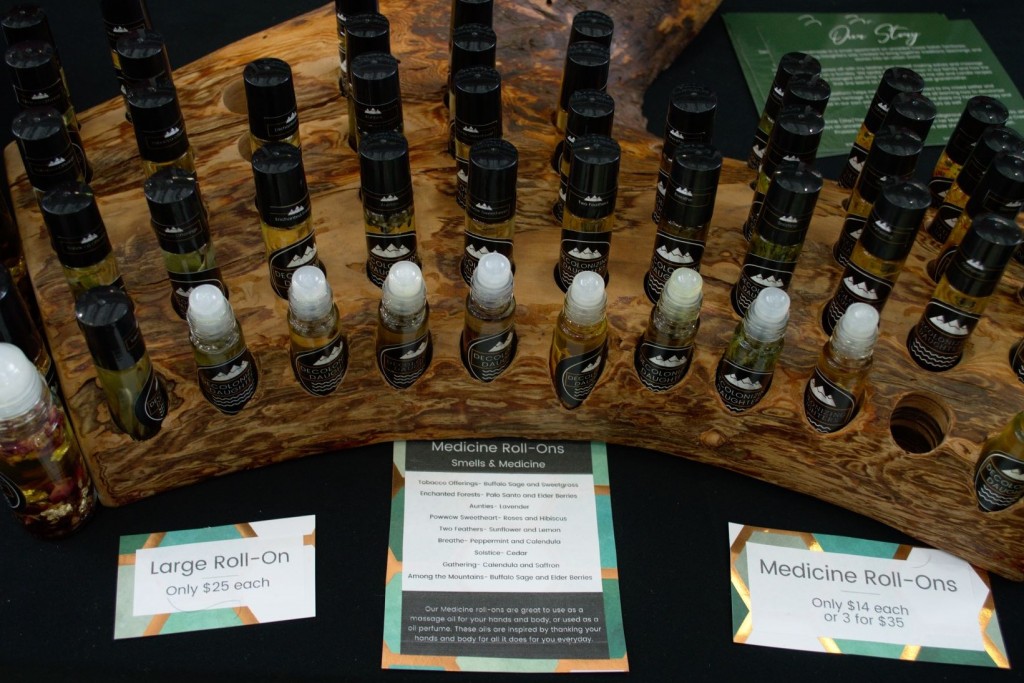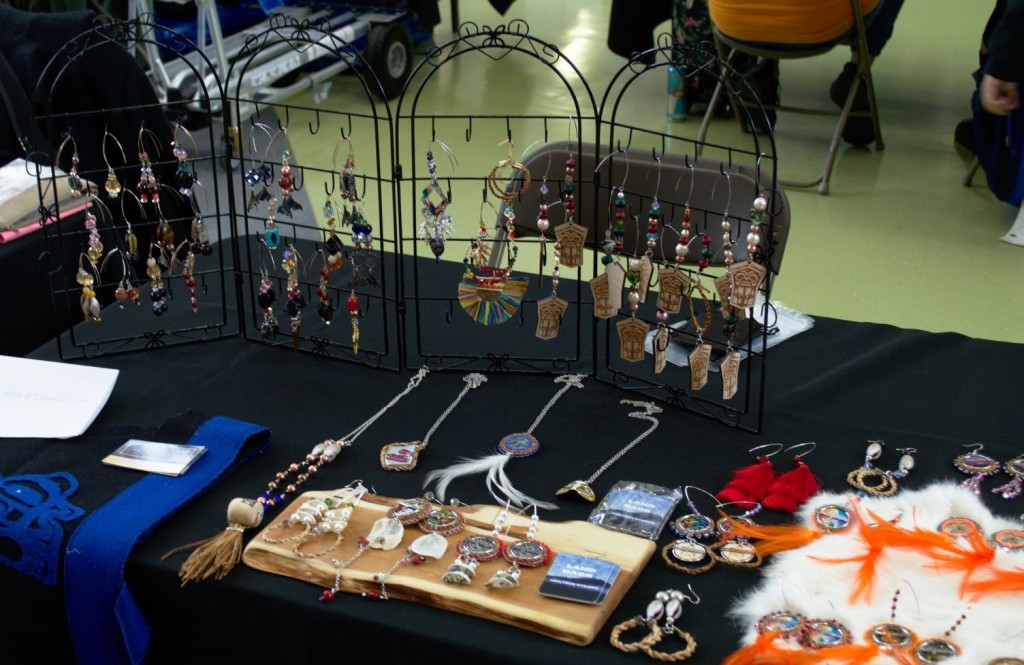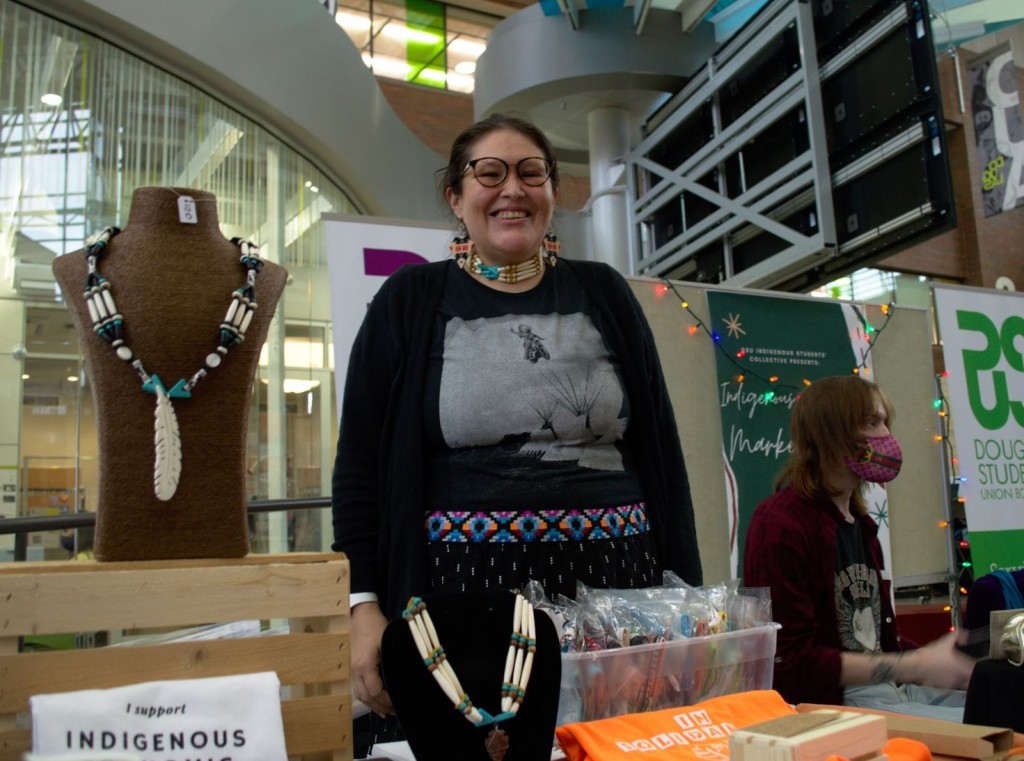
The Other Press speaks with Indigenous artists at the New West campus
By Matthew Fraser, Editor in Chief
The marketplace gave listeners a chance to hear stories and share in the humanity that surrounds them.
On November 23 and 24, the Douglas college indigenous centre hosted an Ingidenious Artisan Marketplace at both the New Westminister and Coquitlam campuses; I had the opportunity to speak with a number of the artisans and hear their stories at New West date.
Located in the atrium of the New West campus, the eye-catching shapes of the designs and the vibrant colours displayed at many of the tables were given an opportunity to shine and attract the curious first-timer and the more informed viewers alike.
While there, I chatted with campus Elder Sandra Greene, who spoke to me about her role in welcoming international students, delivering opening prayers at events or conferences, and educating people through land acknowledgements. She joked briefly that much of her job over the past few years has been relegated to Zoom meetings but she was glad to be back on campus and offering drop-in counselling or just the opportunity to talk with people in her shared office as part of the Indigenous Students Centre.
A Bella Bella, Heiltsuk Indigenous woman named Crystal Dixon had a table where her niece was helping her sell jewellery made from shells traded from the Haida Gwai peoples and cedar local to her area. Just behind her was a table run by the mother-daughter team of Rae-Anne and Danialle, known through their brand as Decolonizing Daughters. Though originally from Saskatchewan, the two now work as intake councillors in the Vancouver area and promote spiritual and physical health through their products.
While I was speaking to Rae-Anne, she intimated to me that the concept was born out of a chance conversation over a meal with her mother. As they were talking the two began to realize that there were traditional answers to some of the needs and issues that faced women. The two then began to make salves, candles, and massage oils on Sundays. The two women began to share and reconnect with traditional medicines and recipes passed down through generations. Through their work, they have been able to celebrate their Indigenous heritage while also sharing their traditional knowledge to the benefit of the wider world.
At the table adjacent sat Darrell A. Thorne, nearly hidden by the various paintings, drawings, postcards and clothes he had for sale. As we talked, he recalled his youth in the Cowichan and Duncan area where he was always engaged in art, but seldom with the traditional works that surrounded him. Yet throughout his youth, he recalled his uncles and near community urging him to try the traditional ways. Around 12 years ago, he took up the path of his elders and he’s never looked back since.
With his daughter’s help, he has made clothes in honour of Orange Shirt day and residential school survivors. Now he has aspirations of expanding opportunities into his community through a future company he has planned called First Nations (FN) Forge. Through this company, he hopes to inspire youth while providing them with opportunities and guidance as they move on to conquer the challenges of the world. Thorne also hopes to use this company to help young people blend traditional and modern arts in a way that expresses themselves and keeps their ancestral ways thriving.
As I walked around the atrium speaking to the artists, I was drawn into an informative and rewarding conversation with Jennifer Mitchell, owner and proprietor of the IndigeUNITY brand. From behind her table, she proudly displays her assortment of handmade necklaces, masks, ornaments and textiles. Beside her, her son alternated between gravely watching the bustling people and playing on his iPad.
Mitchell talked about the sense of community that she feels whenever she can attend in-person markets and gatherings. She spoke of the feelings of isolation that underlined the pandemic and the missed chances for connection. She recognized early that people often miss or lose track of the important things as they hurriedly swipe through Facebook, Instagram or any other social media. For her, the return to personal interactions began the return to the community.
She mentioned the indecision and self-doubt she felt as an artist in her apartment at times without positive reinforcement. It led her to cherish the interactions, curiosity and appreciation that passersby show her at these markets. Her excitement was palpable as she related the time she saw someone wearing a ‘Saved by the Smudge’ shirt she had made shortly after purchasing it: “I felt like a musician who heard their song on the radio for the first time!” Mitchell was clear in how much these acts of community affirmation can lift up an artist.
As she looked across the atrium at her fellow creators, she mentioned the pride she felt knowing that her son could grow up seeing other members of the community working hard and being creative. The sight of positive role models in and around her community seemed to lend a sense of assurance and stability. In the moment her son seemed more interested in his iPad than the adults around him, still, the significance of a healthy community was not lost on Mitchell.
As our conversation came to an end, she touched on how people have their hearts in the right place when they purchase Orange Shirts to raise awareness for residential school victims, but that that goodwill can be more directly beneficial when it is shared with community artists rather than with corporations like Amazon. Here again, she touched on the importance of local markets and that they allow Indigenous people to share their stories and their history as an act of education and community building.
All in all, the marketplace was not just a moment for a few to sell and many to purchase, but an opportunity for community to be built. It gave listeners a chance to hear stories and share in the humanity that surrounds them. In one way or another, every artist I met spoke of community and the people surrounding them; they spoke positively and unreservedly of the good that these gatherings provide and the future it helps them build. It was clear that this market was a success on many fronts.
